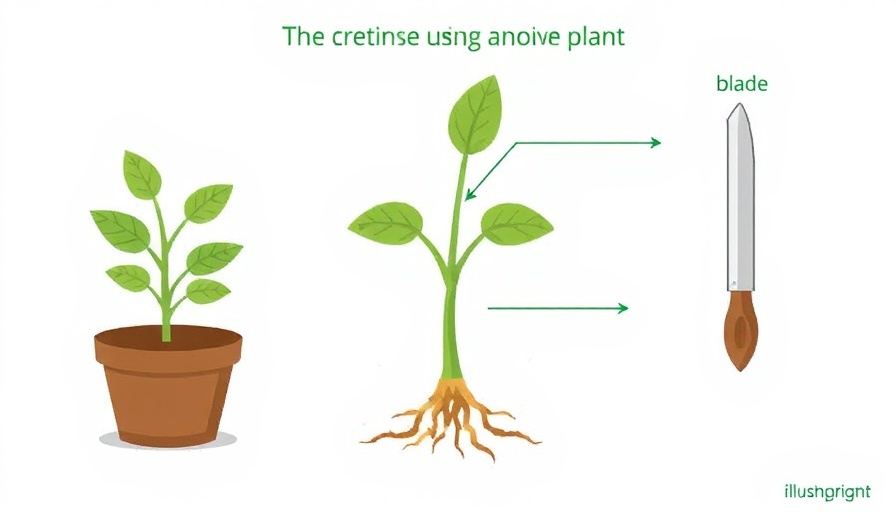
The Future of Gardening: Grow Without Seeds
For many aspiring gardeners, the journey begins with seeds sown into freshly prepared soil. However, there exists a fascinating and efficient alternative: growing your garden without seeds. This technique, known as vegetative propagation, utilizes the plant's natural ability to regenerate itself through various methods, allowing for greater preservation of desirable traits and quicker growth cycles.
Understanding the Basics of Vegetative Propagation
Vegetative propagation is an asexual method of plant reproduction that creates genetic clones of a plant from vegetative parts, such as leaves, stems, and roots. This contrasts with sexual reproduction, where seeds are involved, and ensures that the new plants carry the same traits as the parent. "Vegetative propagation enables growers to maintain distinct cultivars that would not come true from seed," explains Joseph Tychonievich, author of Plant Breeding for the Home Gardener.
The Advantages of Going Seedless
The benefits of vegetative propagation are plentiful. Firstly, the process allows for faster growth than traditional seeding. According to Sandy Feather, an educator at Penn State Extension, plants tend to grow bigger and quicker when propagated vegetatively. Additionally, this method is crucial for preserving varietal traits that might otherwise be lost when relying solely on seeds.
Exploring Various Techniques of Seedless Gardening
1. **Crown Division**: This technique is particularly effective for many herbaceous plants that form clumps. To implement crown division, dig up the entire plant, ensuring to retain the root system and carefully separate it into sections. Each section should include part of the root and part of the shoot. This method is best done when the plant is not in flower and can lead to robust new plants.
2. **Layering**: Simple layering can be done by bending a flexible stem of the plant to the ground and covering a portion of it with soil, triggering root development. For example, azaleas and climbing roses thrive with this method. The beauty of layering is that the new plant remains nourished by the parent until its root system is self-sufficient.
3. **Cuttings**: Rooting cuttings, where a section of stem or leaf is severed and placed in a moist medium until roots develop, is another common method. This can be performed with nearly any plant and is an excellent way to propagate desired varieties.
4. **Division**: Similar to crown division but used more broadly, plant division involves separating a plant into multiple sections that each have a growth point and roots. It’s particularly useful for perennials that may become overcrowded.
Preparing for Success: Tips for Vegetative Propagation
Whether you choose crown division, layering, cuttings, or division, there are several considerations to ensure success: - **Quality of Rooting Medium**: Use a sterile and high-quality potting medium for cuttings, which promotes healthy root development. - **Moisture and Care**: Ensure sufficient moisture but avoid overwatering to prevent rot. Additionally, provide indirect sunlight and proper air circulation to maintain healthy plant conditions. - **Timing**: Certain plants respond better to propagation at specific times of the year, such as spring or fall, which align with their growth cycles.
A Sustainable Approach to Urban Gardening
Embracing seedless gardening aligns perfectly with the ideals of urban farming and sustainable agriculture. It reduces the need for constant seed purchases and enables gardeners to cultivate desired varieties more efficiently. For city dwellers looking to add greenery to rooftops or small backyard spaces, utilizing vegetative propagation techniques offers a practical and eco-friendly solution.
Building Community Connections Through Gardening
Moreover, seedless gardening fosters a sense of community. Sharing cuttings or divisions with neighbors not only strengthens local bonds but also promotes biodiversity within urban settings. Participating in community gardens using these methods can facilitate knowledge sharing and resource pooling, benefiting all participants.
Take Action and Start Your Seedless Garden Today
As you embark on your gardening journey without seeds, consider exploring local community gardens or urban farming workshops to connect with like-minded individuals. The possibilities are endless, and with practical tips and techniques at your fingertips, growing your own food can become both achievable and enjoyable.
 Add Row
Add Row  Add
Add 




 Add Row
Add Row  Add
Add 

Write A Comment